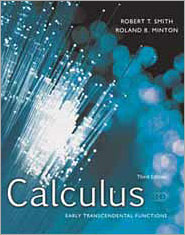 <a onClick="window.open('/olcweb/cgi/pluginpop.cgi?it=jpg::::/sites/dl/free/0073451342/295036/ch08.jpg','popWin', 'width=NaN,height=NaN,resizable,scrollbars');" href="#"><img valign="absmiddle" height="16" width="16" border="0" src="/olcweb/styles/shared/linkicons/image.gif"> (21.0K)</a> <a onClick="window.open('/olcweb/cgi/pluginpop.cgi?it=jpg::::/sites/dl/free/0073451342/295036/ch08.jpg','popWin', 'width=NaN,height=NaN,resizable,scrollbars');" href="#"><img valign="absmiddle" height="16" width="16" border="0" src="/olcweb/styles/shared/linkicons/image.gif"> (21.0K)</a> |
In our daily lives, we are increasingly seeing the impact of digital technologies. For instance, the dominant media for the entertainment industry are now CDs and DVDs; we have digital video and still cameras, and the Internet gives us easy access to a virtual world of digital information. An essential ingredient in this digital revolution is the use of Fourier analysis, a mathematical idea that is introduced in this chapter.
In this digital age, we have learned to represent information in a variety of ways. The ability to easily transform one representation into another gives us tremendous problem-solving powers. As an example, consider the music made by a saxophone. The music is initially represented as a series of notes on sheet music, but the musician brings her own special interpretation to the music. Such an individual performance can then be recorded, to be copied and replayed later. While this is easily accomplished with conventional analog technology, the advent of digital technology has allowed us to record the performance with a previously unknown fidelity. The key to this is that the music is broken down into its component parts, which are individually recorded and then reassembled on demand to recreate the original sound. Think for a moment how spectacular this feat really is. The complex rhythms and intonations generated by the saxophone reed and body are somehow converted into a relatively small number of digital bits (zeros and ones). The bits are then turned back into music by a CD player.  <a onClick="window.open('/olcweb/cgi/pluginpop.cgi?it=jpg::::/sites/dl/free/0073451342/295036/ch08_graphs.jpg','popWin', 'width=NaN,height=NaN,resizable,scrollbars');" href="#"><img valign="absmiddle" height="16" width="16" border="0" src="/olcweb/styles/shared/linkicons/image.gif"> (22.0K)</a> <a onClick="window.open('/olcweb/cgi/pluginpop.cgi?it=jpg::::/sites/dl/free/0073451342/295036/ch08_graphs.jpg','popWin', 'width=NaN,height=NaN,resizable,scrollbars');" href="#"><img valign="absmiddle" height="16" width="16" border="0" src="/olcweb/styles/shared/linkicons/image.gif"> (22.0K)</a>The basic idea behind any digital technology is to break down a complex whole into a set of component pieces. To digitally capture a saxophone note, all of the significant features of the saxophone waveform must be captured. Done properly, the components can then be recombined to reproduce each original note.
In this chapter, we learn how series of numbers combine and how functions can be broken down into a series of component functions. As part of this discussion, we will explore how music synthesizers work, but we will also see how calculators can quickly approximate a quantity like sin 1.234567 and how equations can be solved using functions for which we don't even have names. This chapter opens up a new world of important applications.
|





